Watering and spraying tomatoes with milk
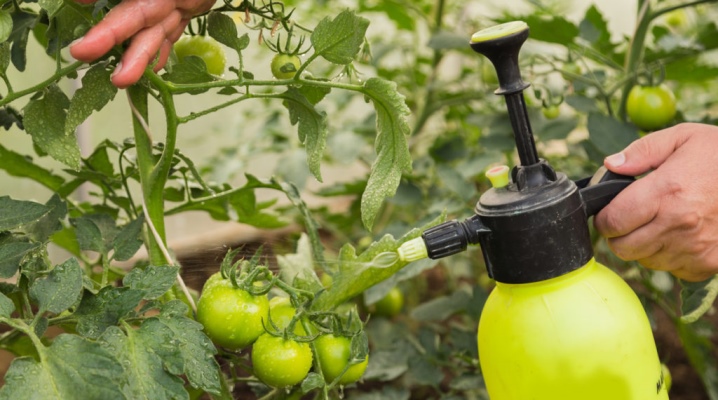
Growing vegetables sustainably, including tomatoes, requires folk recipes. Only in this case, you can not be afraid for the harvested crop and its purity from the point of view of the absence of chemical components.
Milk is one of the most frequently used components in dressings. You should know how to apply it. Consider all possible options for watering and spraying tomatoes with milk.
Benefit and harm
Milk for tomatoes, used in top dressing recipes, can bring a lot of positive moments in the process of growing a tomato bush:
- this component is completely harmless to humans, both by itself and in combination with other natural ingredients;
- milk stimulates plant growth and green mass gain;
- allows the crop to ripen in a shorter period of time;
- due to the presence of lactose, a number of pests can be scared away from the plant.
If we consider the disadvantages of dairy types of dressings, then perhaps only one significant disadvantage can be distinguished. They do not give a pronounced effect in a short period of time. It will take some time and effort to make a positive difference in tomato cultivation.
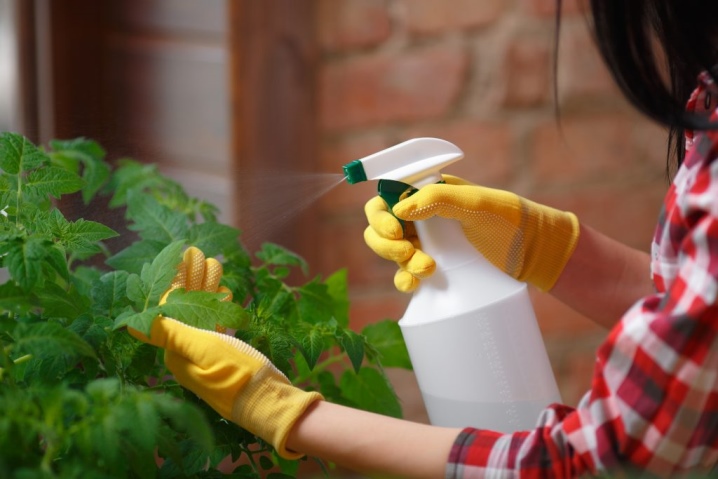
Recipe overview
Tomatoes as a vegetable crop are quite capricious when grown. If you use milk as a top dressing, you can enrich the soil with lactose, potassium, phosphorus and other necessary micro and macro elements. The introduction of this component is especially useful if the following signs are observed in the bushes:
- drooping leaves that appear to be withered;
- darkening of the color of the sheet plate;
- the tips of the leaves become dry;
- a small number of ovaries have formed on the bush, and poor flowering is observed.
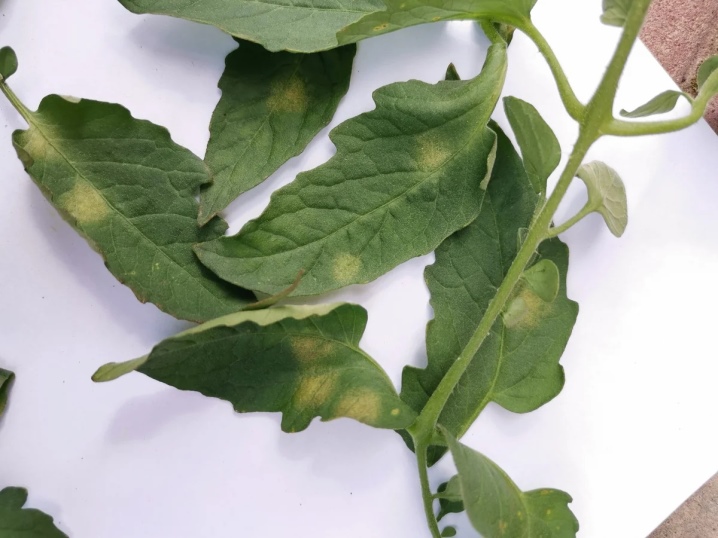
To eliminate all these disadvantages, you can use a variety of recipes with milk.
- Top dressing with honey allows you to saturate the soil with a full range of vitamins and minerals, which are vital in the process of fruit formation.
- With iodine, they are used to scare off pests, as well as to overcome a number of diseases. In addition, if you dilute milk with iodine in a certain proportion, you can get a solution that will strengthen the immune system, improve plant growth, strengthen the ovaries and increase their number.
- Fertilizing based on sour milk will saturate the soil with micro- and macroelements. In addition, such a composition can scare off some insects, especially if you use strongly sour milk with a high level of acidity.
- Milk with yeast will provide vigorous growth and green mass gain.
- Zelenka added to milk will fight late blight and powdery mildew.
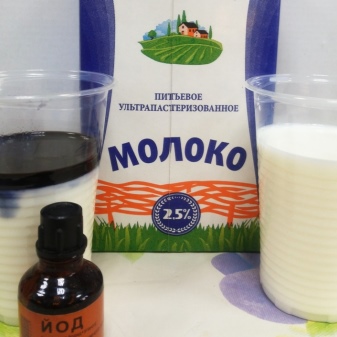
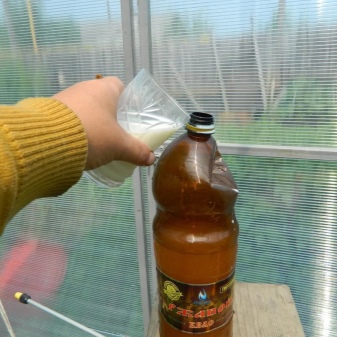
We will tell you about what recipes are in more detail.
Top dressing
As a fertilizer, you can use milk dressings in different ways.
- Spray the bushes with them. This method is very effective. But for its implementation, it is better to use a special sprayer with a fine-dispersed spray gun. True, this can be done only in the morning and evening hours, when there is no direct exposure to sunlight on the plant. After such foliar feeding, a protective film is formed on the leaves and stems, which manifests itself quite effectively. The result can be seen in 1-2 days.
- The second option for adding milk is to water the plant at the root. You can make such a natural dressing once a week at will. But mandatory watering should be performed at the stage of planting seedlings, during the formation of the ovary, at the stage of formation of the fruit. When tomatoes are formed and ripen on the bush, milk dressing can be applied every 3-4 days.

There are several recipes for root watering.
- Take 1 liter of necessarily low fat milk and 10 liters of water and add 15 drops of iodine. Stir everything and water the bushes with the resulting composition, on which fungal diseases begin to spread.
- If tomatoes are grown in a greenhouse, then the concentration of the milk-iodine solution must be increased by 2–2.5 times. Thus, 1 liter of milk is added to 4 liters of water and 10 drops of iodine are taken. All are mixed and watered directly under the root. About 500 ml of the resulting mixture should be added to one bush.
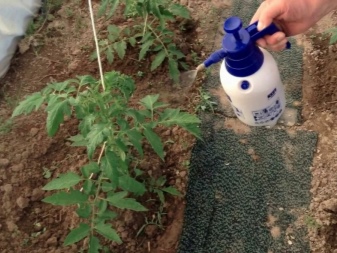
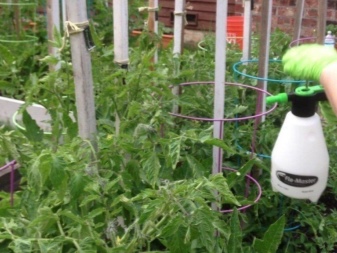
Please note that at the time of fruiting, milk must be fed every 3 days. But this should be done only when the direct sun is not shining and the temperature is not too high. Therefore, most often morning or evening hours are chosen for such watering. To spray tomato bushes, you can use one of the following recipes.
- Take 4 parts water and 1 part milk, mix. Add 15 drops of iodine and 1 cup of ash.
- If the plants are struck by any disease, or there is an accumulation of harmful insects, then 30 g of finely planed laundry soap can be added to the above recipe. As a result of such an additive, the composition will better adhere to the leaf plate and contribute to the elimination of parasites and pathogens.
- When plants lack calcium, ash is added to milk. For 1 liter of milk, add 2 tablespoons of ash and dilute the resulting composition in 10 liters of water. Water the plants under the root. Such manipulation can be repeated twice during the period of stormy vegetation, and then twice more during the formation of tomatoes on the bush.
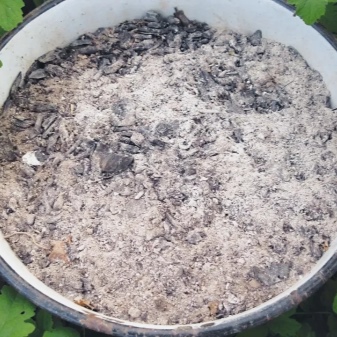
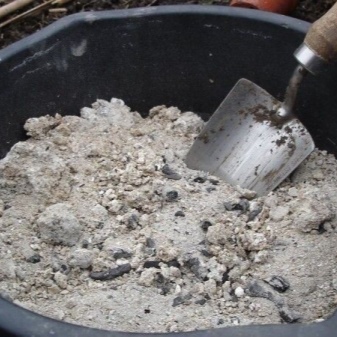
Disease and Pest Control Formulations
To fight a disease or eliminate parasites from a tomato bush, you can use one of the following recipes.
- From late blight A composition made from 1 liter of milk will help, to which 20 drops of iodine and 2 tablespoons of wood ash are added. When the components are mixed, the mixture is diluted in 10 liters of water.
- If brown spot has developed on tomato bushes, which is quite often formed in a greenhouse, the following recipe will help. Take 10 parts water, 1 part milk and 1 teaspoon of iodine. The composition of the leaf plate is processed by spraying. This problem can be recognized by the formed yellow spots on the leaves and a light bloom. If you do not notice the problem in time and skip the treatment, then the plant loses its ability to photosynthesize. And this causes irreparable damage to the tomato bush, leads to a loss of yield, and in especially neglected cases - to the death of the plant.
- If tomato bushes were attacked by aphids, then not only the leaves are deformed, but also the shoots. Also, a sticky coating appears on the surface of the sheet plate. Milk whey will help get rid of aphids. To do this, you need to ferment the milk, then strain it through several layers of gauze in order to collect the thick component and separate the whey. You can apply it undiluted, but more often it is diluted in a 1: 1 ratio with settled water.
- If there are too many aphids on the plants, then you can add iodine to the serum. In this case, take the following components: 2 liters of water, 1 liter of serum and 15 drops of iodine. Everything is mixed and then sprayed on the tomato bushes. Thus, a film forms on the surface of the leaf plate, which prevents not only the development of fungal diseases, but also eliminates harmful insects.
- If the problem with late blight recurs periodically, then you can use the following recipe.Peel the cloves of garlic so that you get 100 g net weight. You can also use young green garlic, but only the white part. Grind, or even better, wipe with a blender. Pour the resulting gruel with 200 g of pure water. Let it brew for 24–36 hours. Then mix with 2 liters of whey and 5 liters of pure water. Thus, about 8 liters of the composition is obtained, which can be used as a spray agent. Apply the resulting solution to the tomatoes by spraying through a fine sprayer twice to completely eliminate the problem. Allow 12-15 days between spraying. It is imperative to carry out processing at a time when dry weather is established outside without strong gusts of wind. Otherwise, the processing efficiency is reduced significantly, and you will have to perform it again, spending precious time.
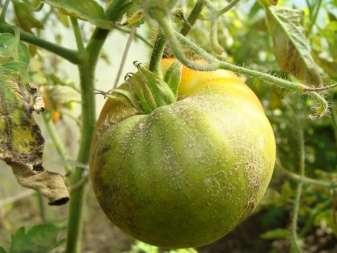
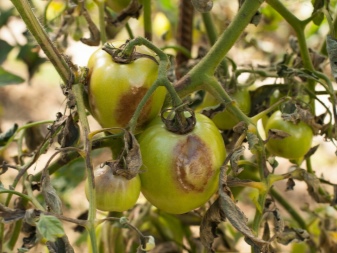
How to apply correctly?
If you adhere to the recommendations for caring for tomato bushes, then you can not only get rid of numerous problems with diseases and harmful insects, but also collect a high-quality harvest. This will help feeding based on milk or whey. To feed or process tomato seedlings or adult plants, you must adhere to certain rules. Only in this case can an obvious effect be achieved.
- Spraying tomatoes is carried out only when there is no direct exposure to sunlight on the plant.
- Fertilize with milk-based dressings regularly to get a visible effect.
- If it is necessary to process the diseased plantings, then first you need to pull out the intensely infected bushes and burn them. Next, you should spray the prepared solution on the remaining plants.
- If you need to get rid of phytophthora, you need to spray tomato bushes every 3 days. After 3-4 treatments, the problem will disappear.
- You can water the plants in the morning or evening, when there is no scorching heat. Otherwise, the effectiveness of top dressing is sharply reduced, since some of the moisture will simply evaporate from the soil surface and will not get into the root system.
- At home, when growing seedlings, it is recommended to spray, since in this case the likelihood of developing fungal diseases is eliminated. The same method is recommended for use in a greenhouse.
- During flowering, watering with spraying should be alternated. In this way, you can contribute to the formation of strong tomato fruits.
- If it is necessary to spray the plants, then it is imperative to wait for calm weather. This is necessary so that small drops in the form of a suspension fall directly on the bush, and they are not carried away to the side.
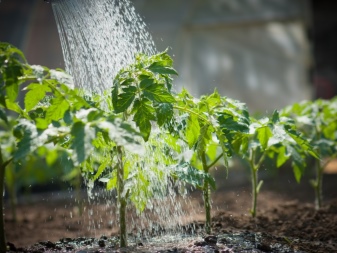
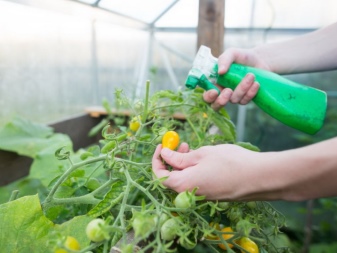
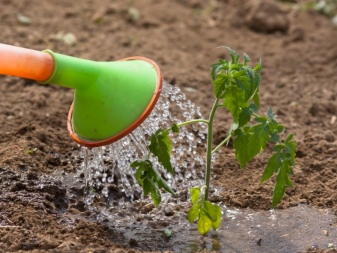
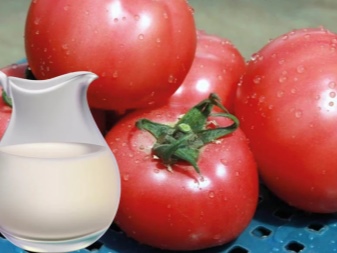













The comment was sent successfully.